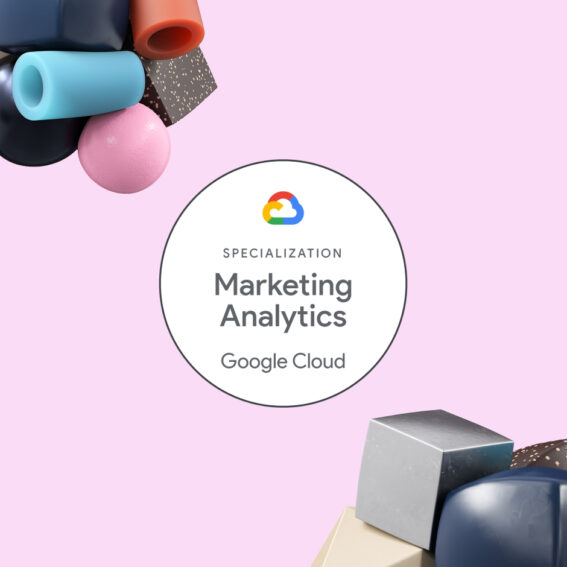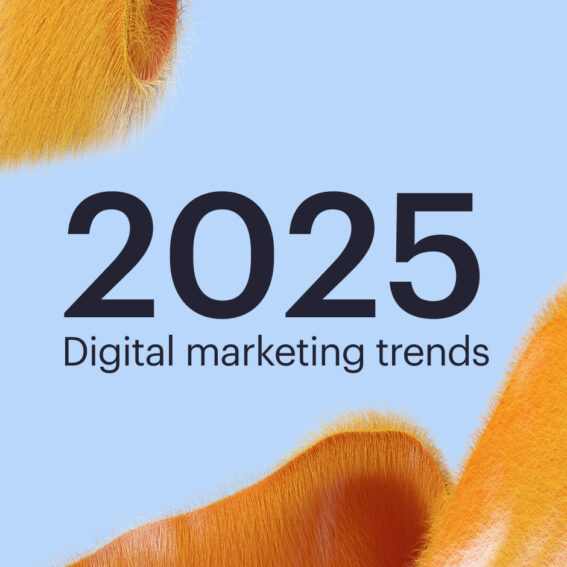Why your main goal should not be to build a unified customer journey

Matilda Jansson
Partner & CEO Precis Stockholm
If this blog post had been published two years ago, the word ‘not’ may have been omitted from the title. It’s possible that you’ve just spent the last two years convincing your co-workers and management teams that creating a unified customer journey is the way to go. So now, when you’ve finally got your IT department to understand that what you want to achieve isn’t something that could be built upon their customon-premise CRM-database from the 90s, we again find ourselves reconsidering amid fundamental change.
Marketing as we know it is set to change…
Please don’t despair! The likely struggles you had in convincing internal stakeholders – putting together business case after business case, and succeeding in getting everyone’s approval but the legal department (you knew that would be too much of a blocker) – were not in vain.
Now, it’s crucial that you switch your focus to understanding what’s happening in the marketing industry. What effects will it have on your business and how can you reap the rewards of those two years of hard work by quickly switching priorities and gaining a solid competitive advantage?
We’ll do a deep dive into the changes we mentioned soon, but first, let’s conclude that the following tactics – likely to have been a part of your marketing strategy until now – will not be the way to go:
- Creating rule-based segments based on basic heuristics rather than robust logic or modelling, and sharing these segments across channels for activation
- Striving to understand how every single customer behaves across every single touchpoint and channel
- Focusing heavily on building and sustaining your own ecosystem around third-party data
- Collecting as much data as possible about the customer without informing them or getting their consent
- Personalising the website experience for every single customer using cookies
- Relying solely on path-based attribution using cookies without any additional logic
Privacy regulations (GDPR, ePrivacy, CCPA), technology changes (ITP, privacy browsers, ad blockers), and trends in user perception have made it clear that the future for digital marketing will require that we think about data differently. Tech that focuses on prioritising privacy is coming, if not already here. The new IOS14 update includes privacy features to enable more control over how apps can access your personal data, such as photos and location, while Google’s move away from personal identifiers has been covered here. The numbers we used to rely on are not trustworthy anymore. Instead, the questions we should be asking ourselves are:
- How can we drive better results with less data?
- How do browser developments like ITP affect us?
- How will privacy developments affect marketing evaluation?
- And most importantly, what should you do to turn panic into a competitive advantage?
The illustration below (figure 1) shows what one of many paths to purchase for a specific customer could look prior to all the changes we’ve started to see today.
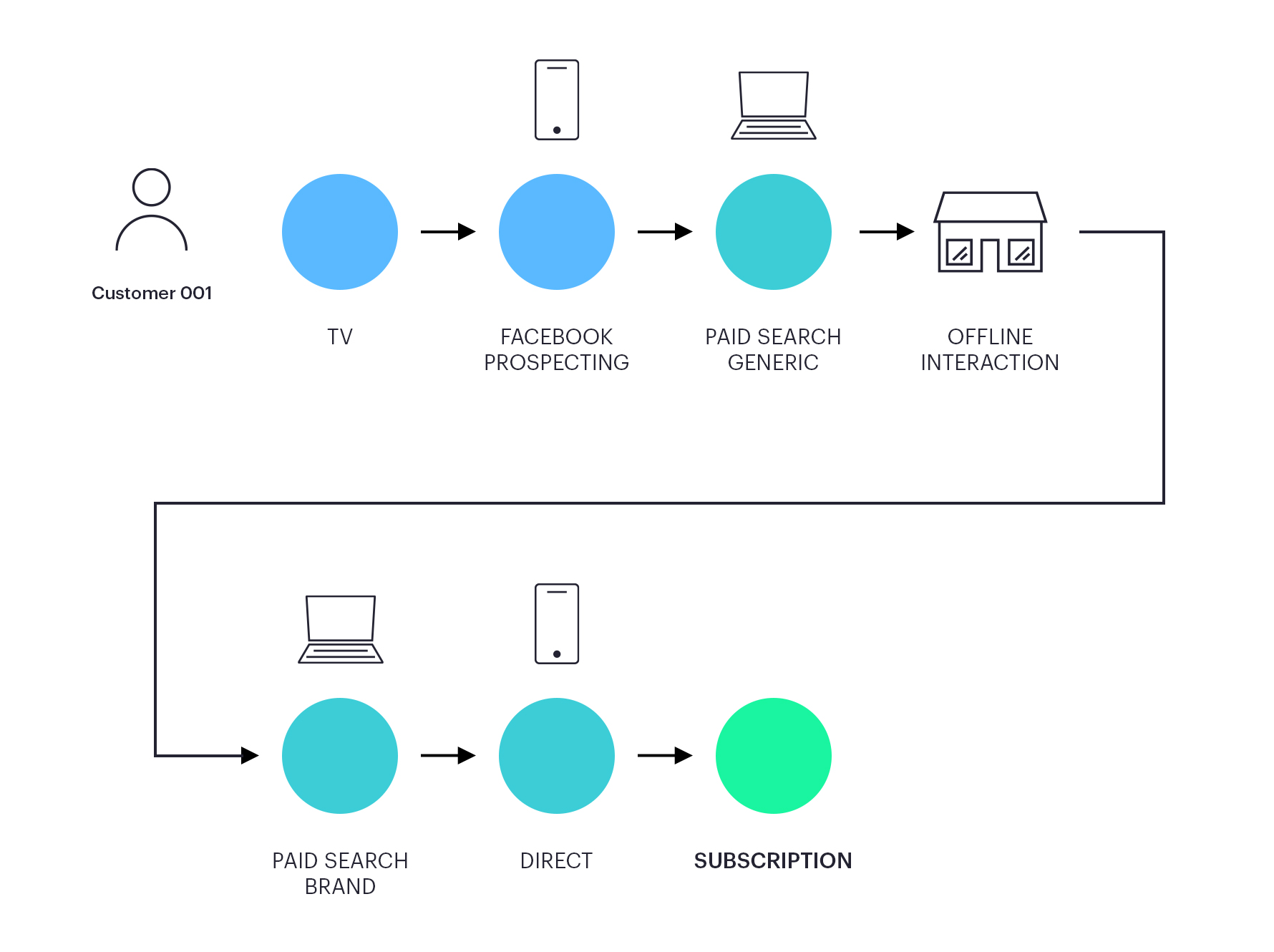
Figure 1
Two years ago, if you did a good job of collecting as much data as possible, (again often without letting the customer know), your path that served as input data for the attribution algorithm could look something like the illustration in figure 2. The output (distribution of revenue) could be shared across the channels to assign value to their contribution to the final conversion.
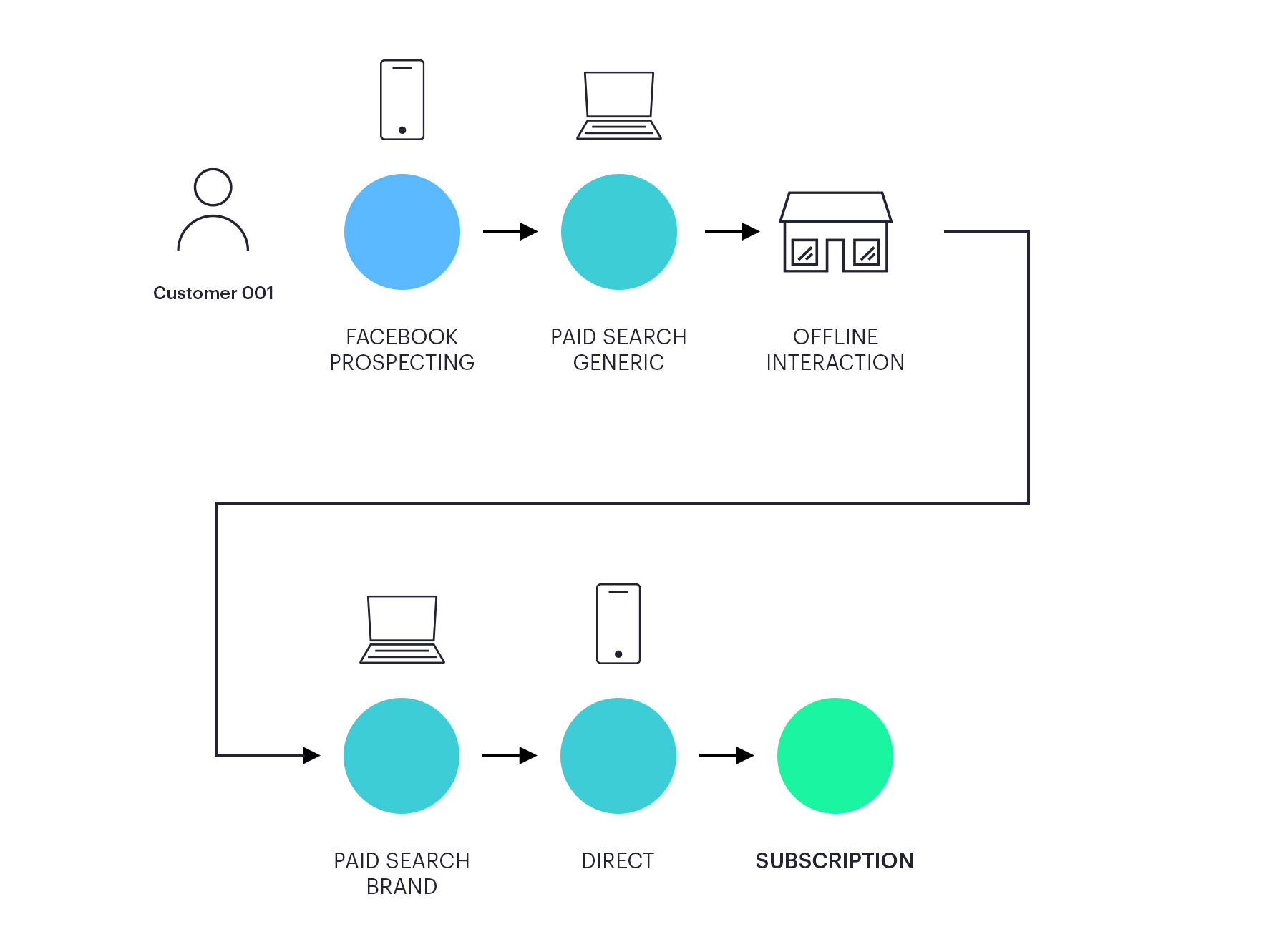
Figure 2
Figure 3, shown below, is a more accurate representation of the situation we face today. Starting with the mid to upper-funnel, interactions are more challenging to capture in a large part due to ITP (Intelligent Tracking Prevention). These paths depend heavily on third-party cookies, which are now completely blocked by Safari. And, given that Safari represented 20% of all users in the last 12 months (March 2020 to March 2021, according to this worldwide browser market share data) this is a big red flag.
GDPR makes the situation even more challenging. According to the European court of justice, active consent is needed for tracking. No consent means no tracking, so even the last interaction will be impossible to measure. If you believe last click attribution is a bad oversimplification of reality, how about no attribution at all?
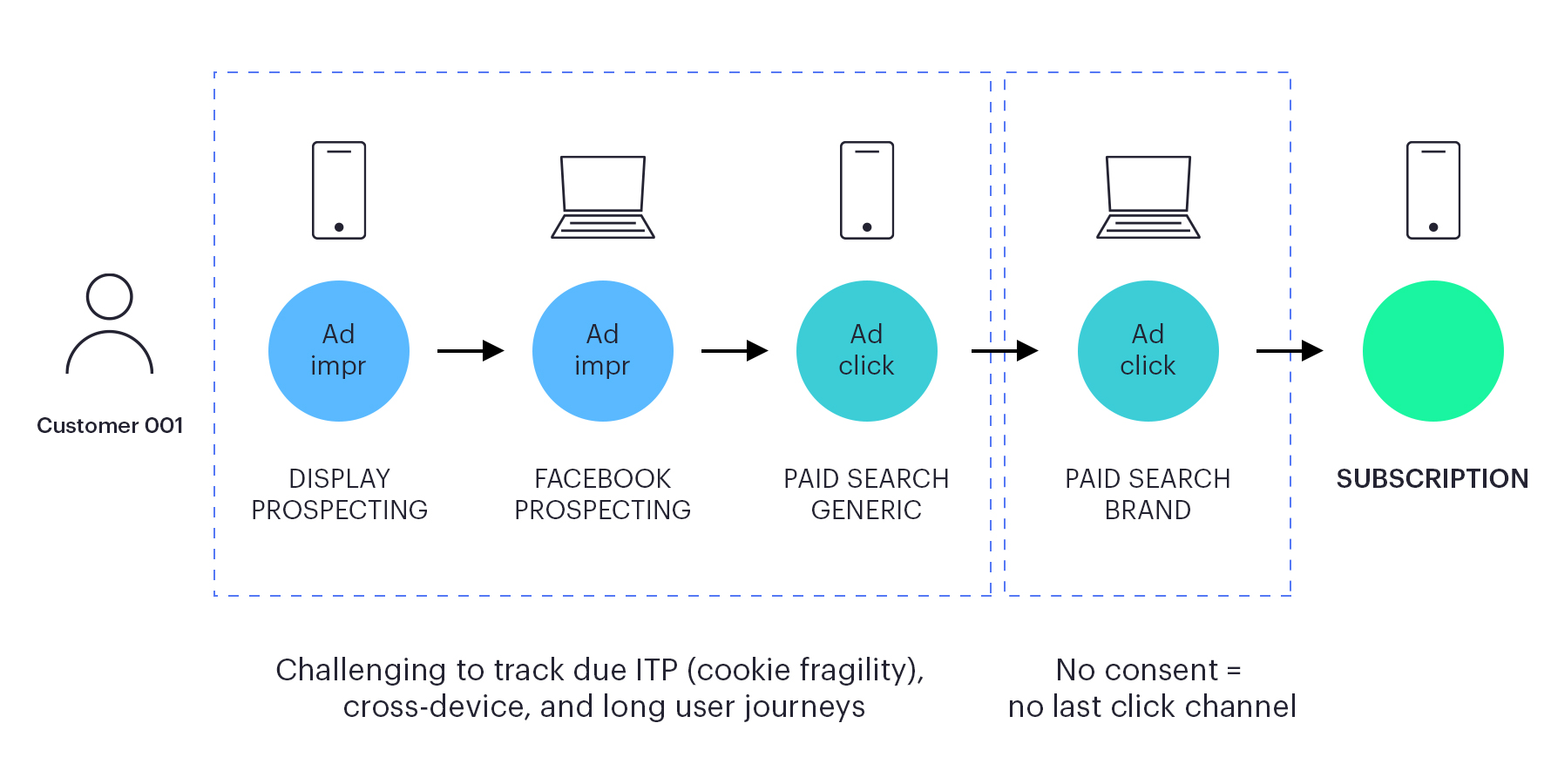
Figure 3
The marketing strategies we no longer recommended
1. Creating rule-based segments based on basic heuristics rather than robust logic or modelling and sharing these segments across channels for activation
This is the most common tactic for a “unified customer journey project”, and the vision of one single place where people can easily build segments of customers and potential customers, which can be activated in marketing channels, is compelling. But this tactic was always rather flawed, based on trying to build a solution that fits your company and people working there, rather than the strategy that would benefit your business and customers the most.
Instead of using a basic interface to build segments, time should have been spent on creating the richest and most actionable datasets. It would make sense to put more effort into building trust with customers and using 1st party data to enable better cross device insights. The cookie data we collect now is much less reliable, so we need to spend much more time collecting richer data and it is likely we also need to model the data before we even think about creating segments, to make sure that it is representative.
In short, applying a ‘one size fits all’ approach when creating segments has become an even worse idea.
2. Striving to understand how every single customer behaves across every single touchpoint and channel
This is clearly a utopia; it’s simply not possible to achieve. But it’s also essential to question what the purpose of doing so would be. Let’s say you invest time and resources to succeed. You end up with fancy customer profiles, collecting tons of data on every single customer across every channel. Aside from the fact that your customers most likely will not be impressed by the profligate data collection practices, what will you do with the information? As many as 80% of companies fail at the activation phase, but even if you are one of the few who succeed in activating the data, is the best outcome showing the customer the same ads across all channels? The adoption of ad blockers shows customers are not impressed.
3. Focusing heavily on building and sustaining your own ecosystem around third-party data
The third-party data market to create audiences via platforms such as DMPs has almost completely disappeared with the introduction of GDPR. The use of third-party data is now mostly limited to the ad platforms and DSPs. This means that there is a need to accept a more fragmented approach to managing audiences. The companies who succeed here are the ones who find smart ways of utilising their first-party information in combination with the ad giants’ data.
4. Collecting as much data as possible about the customer without informing them or getting their consent
Given current privacy trends, a strategy of unfettered collection of data carries with it a serious risk of losing customers’ trust. Privacy breaches can result in large fines and significant brand damage. On the other hand, allowing legal teams to set the agenda entirely for data collection brings with it the risk that the value of data and the right way to communicate with customers could be missed in the implementation of privacy measures.
5. Personalising the website experience for every single customer using cookies
Web personalisation based solely on cookies is already flawed. An obvious drawback is that, in many cases, historical behaviour will be forgotten with the deletion of cookies, making the potential for a personalised experience based on previous behaviour very limited. Another significant consequence is the risk of mixing up users in the test and control groups. The quality of the experiment results could be very doubtful.
I get it, but what should I do?
If you’ve read this far, you’ve probably confirmed what you already knew – your marketing is in need of major strategic change. But, what is that change? Should modern marketing give up? What is data-driven marketing in the 2020s?
In the rest of this series, we’ll look into what you can do to stay ahead of the competition.

